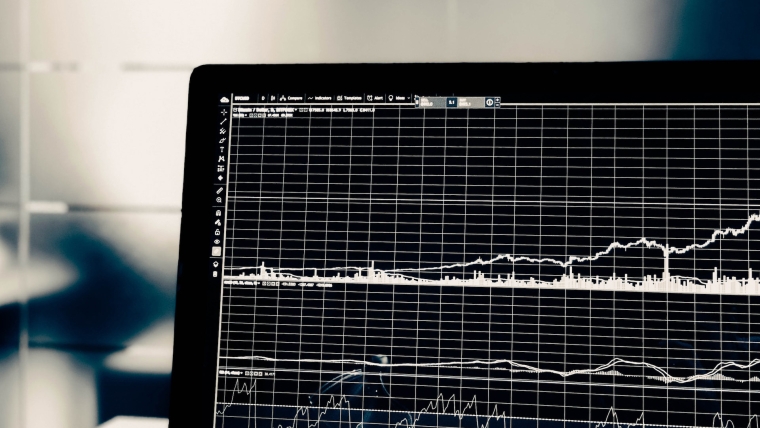
The bond market has priced in just a 25% chance of the Reserve Bank lifting the Official Cash Rate (OCR) over the summer and has fully priced in a rate cut by next November.
Analysis released by ANZ economists on Thursday showed traders were expecting the OCR to be 6 basis points higher in February — equivalent to a one-in-four chance of a 25 basis points hike.
The same analysis one month ago showed traders were fully pricing a rate hike in February and were even factoring in a small chance of another following it in April.
Expectations of a lift above the current 5.50% benchmark rate have been waning throughout October, but were pushed down further by the labour market data released on Wednesday.
Prior to the release, which showed the rate of unemployment rising slightly faster than expected, the market was pricing in a greater than one-in-three chance of a rate hike.
Jason Wong, BNZ Senior Market Strategist, said the labour data had been weaker than expected, with the unemployment rate rising 0.3 percentage points to 3.9% — its highest level in more than two years.
“The data conveyed a picture of labour market tightness abating and this leading to weaker private sector wage inflation,” he said on Thursday.
This news drove the NZ dollar and local interest rates lower. The NZD dropped as low as US57.91 cents but has since recovered to US58.74c, the strongest exchange rate since mid-October.
“In the rates market there was some paring [back] of tightening priced into the curve and the market slightly brought forward the timing of any easing next year,” Wong said.
The two-year swap rate fell 10 basis points to a seven-week low of 5.48%, while the 10-year rate dropped just eight basis points. The 10-year government bond yield was down six basis points at 5.50%.
ANZ economists David Croy and Henry Russell said the softer labour market reduced the need for hike rates in February, but still saw risks as being “tilted to more tightening being needed”.
Bond traders seemingly agree with this assessment and are still pricing in a reasonable chance of the Reserve Bank’s Monetary Policy Committee opting for an increase this summer.
The committee will meet later this month to set policy that will remain in place for three months over summer holidays. During the year, the committee meets every six weeks.
Traders see little chance of an increase at the November 29 meeting and only a small chance of an increase when they return on February 28.
They expect at least one rate cut to have been completed by November next year, with some chance of a cut beginning in July and increasing throughout the year.
A second cut had been priced in for April 2025, which would bring the OCR back down to 5%.
19 Comments
Rates dropping in 2024 aye- not sure that fits the HFL narrative.
No doubt hanging off JPow's smoke signals overnight.
If the jobs data is accurate the upward pressure on wages has just evaporated. Given the larger numbers dropping out of the quarterly CPI numbers over the next few quarters, as headline CPI declines real interest rates start stepping up significantly. It's certainly not out of the question to envisage the RBNZ could be in the position to adjust the cash rate a little lower to account for this "real" tightening of policy. An adjustment doesn't necessarily mean the beginning of an easing cycle. Once the USD turns lower which appears likely now the Fed has stopped raising rates our tradables inflation will benefit adding to the disinflationary pulse that would even further justify an RBNZ adjustment.
An adjustment doesn't necessarily mean the beginning of an easing cycle.
You reckon? Remember the Fed wears the pants here. Now that the Fed has paused over two meetings, every other central bank has cover to print. That could mean massive stimulus from China, Europe, and Japan. And of course, Nu Zillun'.
If they drop OCR the NZD will tumble even more putting pressure on inflation. If they are worried about unemployment going up 0.2 why not stop immigration for a few months.
I'm not sure the RBNZ has that lever
I think the mantra "the RBNZ has to follow the Fed, or the NZD will collapse, is overplayed". If the NZD drops further, then Kiwis will just import less and it's good for our exports, so good to help NZ businesses and in the medium term, good for employment.
I agree Yvil. If it were true we may as well not have a reserve bank. We have often had cash rates out of sync with the US.
I think there's next to zero chance the OCR will be going any higher than now, in the foreseeable future. I believe the economy will continue to deteriorate into 2024 with negative GDP/capita, increasing business failures, more redundancies, higher unemployment and low confidence.
But with lots more immigration and increased pressure on property! Go figure
Don't underestimate the effect of immigration on inflation. I think the number of people settling here will keep demand for products, services and housing keeping the inflation party going for a good while yet. Prices rises are expected and entrenched now. The RBNZ won't want to drop the rates causing inflation stay with us. Or do they? Inflation will whittle away government debt nicely.
Immigration will also help to suppress wage growth which is a major contributor to inflation.
Indeed. And with over a million households having interest payments in the range 7% to 9%, there will be little left to spend on discretionary items, and the CPI will come down. I wouldn't be surprised to see deflation by the end of next year.
lol
higher immigration will lead to greater competition between uber drivers and kebab shops, will help bring inflation down.
Interesting graph - the market is expecting only an OCR level at 5.00% in April 2025, against the RBNZ's own projection of 5.36%. While this might not appear like a big difference, it still means that current pricing of existing bonds might result a bit overinflated, depending on their maturity, if the RBNZ does stick to its guns.
The labour market is now an employer's market and consumer demand continues to soften. If we get a weaker USD in the early stages of next year, I think a rate cut is on the cards by mid 2024. Current monetary conditions have the potential to change quite quickly.
Someone asked someone (I can't remember, might have been me) which indicators they were looking at to conclude HFL was crap and i-rates would be coming down - or at least signaled - earlier than many are predicting.
Look no further than that graph above.
Economics Question: Can the OCR be dropped by small amounts without stoking further inflation at this time?
Surprisingly - the answer is yes. Or at least that's what history shows.
A good way of looking at this is a physics analogy. There was a force (supply chain failures, excessive low i-rates, etc)) pushing a mass (inflation) faster and faster and the mass gained speed and momentum.. The force then ceased but that momentum kept the mass moving at a certain speed. Suddenly a counter force hit (OCR rises) the mass and it started to slow. As it slowed, friction became a more significant part of the force slowing the mass down. Thus the initial slowing force (OCR) can be reduced and friction can be left to do remaining work.

We welcome your comments below. If you are not already registered, please register to comment
Remember we welcome robust, respectful and insightful debate. We don't welcome abusive or defamatory comments and will de-register those repeatedly making such comments. Our current comment policy is here.